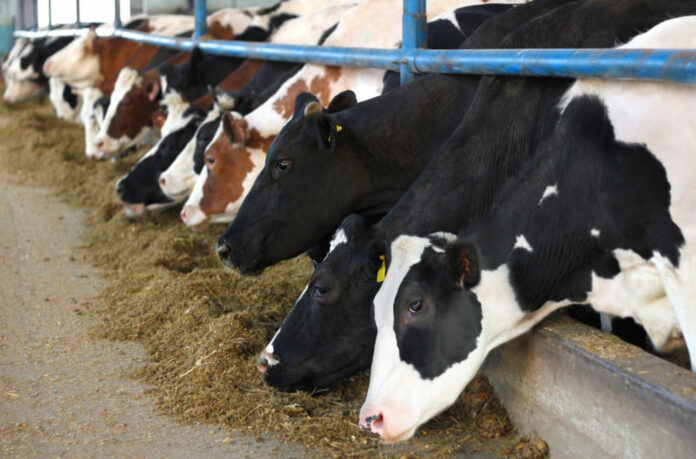If you are a dairy farmer and you are not happy with the proceeds from your raw milk trade, then you need to start thinking value addition. What is value addition and how can you make more money from value addition if you are a dairy farmer?
Value addition doesn’t only apply to milk; it can actually be realized on all agricultural commodities; but emphasis is put on milk in this article. Value addition refers to the extra monetary gain made by the producer on an agricultural commodity or product due to some additional processing done on the product.
This can be by way of changing its physical state or by product segregation into many other products that target different market segments.
Milk can be heated into pasteurized milk, processed into milk powder or converted into yoghurt, cream, cheeses or ghee just to mention but a few.
All these products have advantages over raw milk either in their nutrient concentration, lifespan or higher market price. Before you embark on any value addition intervention, identify the end product you intend to have, profit margin, your customers needs and which marketing channels will ensure you reach them and how will you demonstrate the quality of your product.
Are there cost implications?
Short training: For you to do value addition there are costs that you must be prepared to handle. To identify which milk products will meet the market demand a survey will be required. In order to carry out this survey and do the on-farm value addition, a short course where the science of producing value added products is necessary.
Various dairy training institutes offer short courses on yoghurt, cheese and butter making using simple technologies at home. If you have farmers groups such trainings can be booked by the group at subsidized costs.
Machines, equipment and packaging
Depending on the scale of your production you will need to acquire some equipment and machines. These will range from simple fermentation vats, bottle fillers and cappers to a complex pasteurisers, homogenisers and milk separators. In yoghurt making you will need to buy bacterial cultures that do the fermentation and the packaging materials which can be bottles or tetra parks.
You will need extra helping hands either to do manual work or specialized machine operations. It may never work as a one man show if you are serious about doing value addition to your milk; yours is a small factory that must produce a critical number of products, get them to the market almost on a daily basis to offset the cost of production.
Things you must look at when buying a dairy cow in Kenya today
Branding and advertisement
Remember value addition boosts the publicity of your farm and the products. For example the yoghurt or butter that you produce will have a brand name; which has to be registered by relevant authorities and be made known to the consumers through advertisement.
Local vernacular radio stations will come in handy as channels of advertisement in your locality at relatively affordable rates.
Licensing
Since you are now directly involved in an industrial process though on a small scale, various regulatory bodies will have to clear you at a fee. This is a way of ensuring food safety for the public.
What are the benefits of value addition?
More cash value-added milk products when properly branded can improve publicity and viability of a farm by making it more visible to the public than when selling your raw milk directly to your local cooperative.
Value addition as the name suggests greatly increases the value of the commodity. The main task in value addition is to ensure that your end users can appreciate the new value and are willing to pay that extra coin.
But value addition doesn’t necessarily mean an increase in price. It may at times lower the value of the commodity; for example milk without cream may fetch less money; whoever this is still regained in as the two are sold as different products. Either way you will certainly make more from your value added milk than the raw milk.
How can I do value addition?
There are many ways of doing value addition to your milk.
Organic farming: A farmer can do value addition through the type of production they have. Yes, you can produce organic milk; but this requires strict accreditation and regulatory mechanism in place from the farm to the market to seal any loopholes that can be exploited by unscrupulous businessmen.
Packaging: Bottled milk
Value addition can even be realized through simple packaging for example bottled milk. Most of these products can be produced on a small scale on farm; using simple and improvised technologies but some will require large capital outlays.
Bottling is a simple way of value addition and can be done for raw or pasteurized milk, but for it to translate to increased sales and price it must be tied to something else. This can be the reputation of your farm which should be tied to your unique production system.
For example, is your farm known for its cleanliness? or is your milk from a specific breed? and is there something unique about that particular breed? In the developed world animal welfare concerns are a selling point and consumers are willing to part with that extra coin to advance the animal welfare course. All these are included in the labeling.
Processing or segregation into other products
Milk can be further processed or segregated into other products that have special nutrient concentration or form that is preferred by the market. Most of these products have health advantages which forms a key selling point.
Yoghurt: There are different types of yoghurts depending on the flavours and milk (goat or cow) and consequently the brands. Yoghurt has been shown to have health benefits by boosting the immune system, help in digestion by lowering constipation and protection against food poisoning, offer fresh breath and strong bones. Ghee, a form of purified butter, is used in Asian dishes and traditional medicine rituals.
Research shows that when the ghee is derived from grass-fed cows, the butter contains cancer-fighting fatty acid conjugated linolenic acid, which aids in weight loss and also cholesterol levels.
Cheese contains a number of vital vitamins and is rich in calcium, sodium, potassium, iron, zinc and phosphorus. It is thus good for your teeth and bones.








